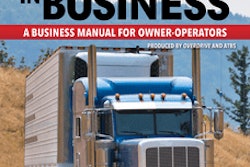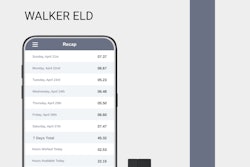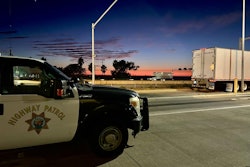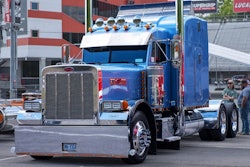Trucking news, briefs for Friday, Aug. 1, 2025:
- Indiana lawmakers gave the state DOT new authority to go after a tolling option for more interstate highways there.
- The Aurora Innovations company says it's running its Driver autonomous system commercially now in nighttime hours, an apparent first for the company.
- Trucker Terry Walde tells the harrowing story of a cyclist who had been struck by a truck in a hit-and-run accident. Walde stopped to help, and the hit-and-run offender was later apprehended and charged.
New Indiana law allows the state DOT to seek a tolling waiver
The state of Indiana has given its Department of Transportation the authority to request a federal waiver that would allow it to add toll lanes to interstate highways.
The measure was included in a transportation funding bill that passed the state’s legislature and was signed into law on May 1.
According to reporting from the Indiana Capital Chronicle, Indiana lawmakers in 2017 gave the state’s governor the power to add tolls to roads and bridges in the state, but action was never taken by former Gov. Eric Holcomb.
This year’s legislation updates the language around adding tolls in the state and gives the Indiana DOT the authority, with the governor’s approval, to request a waiver from the Federal Highway Administration (FHWA) to toll lanes of interstate highways. If a waiver were granted, the Indiana legislature would not have to pass approving legislation.
According to a fiscal note accompanying the bill, a previous tolling study estimated Indiana could receive approximately $38.2 billion in revenue over the 22-year period of 2029 to 2050.
A general prohibition in federal code prevents states from imposing tolls on federal-aid highways, but there are certain exceptions through special FHWA programs. Those programs allow tolling to generate revenue to support highway construction activities and/or enable the use of road pricing for congestion management, such as what's happened on I-77 lanes in and around Charlotte, N.C.
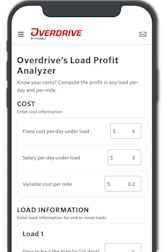
The American Transportation Research Institute in 2020 conducted an analysis of the toll systems in the United States that exist and found they "collect revenue in excess of the actual direct costs of operations and interest expense, with nearly 50 percent of toll revenue diverted to other uses," ATRI said. Collection efforts, including operating toll facilities themselves, meanwhile, accounted for almost a third of total toll revenues.
"The magnitude of diversion and the lack of standard practice with regard to revenue diversion speaks to the disjointed control under which toll entities operate," ATRI said, "in stark contrast to the supervision and public policy standards that dominate the use of the fund such as federal fuel tax revenue and the supervision of the expenditures of these resources by agencies."
[Related: Court rules Rhode Island can reinstate truck tolls -- without daily caps]
Autonomous truck developer Aurora begins nighttime hauls, opens new terminal
Aurora Innovation, a developer of autonomous trucking technology, this week announced a significant expansion of its commercial operations, including surpassing 20,000 miles with its Aurora Driver tech in full control at the end of June. The company also recently growing its commercial autonomous fleet to three trucks, and began commercial operations at night, opening a new Phoenix terminal.
Aurora has been operating “driverless” autonomous hauls between Dallas and Houston, though with a human operator in the front seat, and is now expanding operations on that lane to include nighttime driving. The company said this “more than doubles truck utilization potential, significantly shortening delivery times on long-haul routes and creating a path to profitability for autonomous trucking.”
Powered by Aurora’s proprietary, long-range FirstLight Lidar, Aurora said its autonomous Aurora Driver can detect objects in the dark more than 450 meters away, identifying pedestrians, vehicles, and debris up to 11 seconds sooner than a human driver.
[Related: Driverless-truck tech: Owner-ops worry over cyberattacks, crashes, competition]
Aurora’s new terminal in Phoenix opened in June. The company said Fort Worth to Phoenix is nearly half the distance of the busy Atlanta to Los Angeles freight corridor, taking more than 15 hours to complete. Aurora is currently making autonomous hauls on this lane for Hirschbach and Werner.
“Efficiency, uptime, and reliability are important for our customers, and Aurora is showing we can deliver,” said Chris Urmson, co-founder and CEO of Aurora. “Just three months after launch, we’re running driverless operations day and night, and we’ve expanded our terminal network to Phoenix. Our rapid progress is beginning to unlock the full value of self-driving trucks for our customers, which has the potential to transform the trillion-dollar trucking industry.”
Aurora has also launched Aurora Driver Live, a publicly available livestream of its self-driving truck operations.
[Related: When will owner-operators have to compete with truly 'driverless' trucks]
Driver honored for stopping to help cyclist involved in semi-truck hit-and-run
The Truckload Carriers Association has named truck driver Terry Walde of Miami, Manitoba, Canada, a Highway Angel for stopping to aid a cyclist who had been struck by a semi-truck on the road in a hit-and-run accident. Walde drives for Searcy Trucking Ltd, out of Winnipeg, Manitoba.
 Terry Walde
Terry Walde
“I saw the bicycle, and I also saw the guy lying there beside the bicycle,” said Walde, who has been a professional truck driver for 42 years. “Another truck driver stopped and called 911 while I tended to the guy, to make sure he was still alive.”
The cyclist had sustained serious injuries including a broken leg, ribs, and collarbone. He was lying on the side of the road, struggling to breathe.
“You could see on the grass along a ditch that the truck (that fled) drove right onto the grass, then kept going back onto the road again,” Walde said. “You could see the right tire tracks of the tractor-trailer went right over [the cyclist] on the grass.”
Walde communicated the cyclist’s injuries to emergency responders, and then realized traffic wasn’t slowing down near the accident scene so he directed traffic for several hours.
Searcy Trucking later provided dashcam footage to support the investigation. RCMP Constable Ryan Oram confirmed with Searcy Trucking that the driver responsible was apprehended and charged shortly afterward.
When asked why he went to such lengths to help the injured cyclist, Walde was very matter-of-fact -- “I’m old school -- it’s the way I was taught,” he said. “We help each other.”


